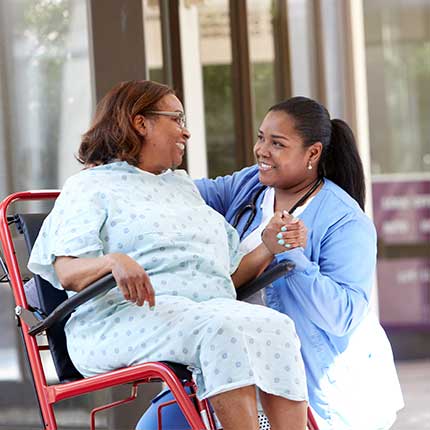Healthy Living
What Usually Triggers Shingles?
Herpes zoster, also known as shingles, is a painful and itchy rash triggered by the varicella-zoster virus, which also causes chickenpox. A shingles rash usually develops on one side of the face or body, but it can also appear anywhere, including on your face, eyes and genitals. In the United States, about 1 in every 3 people will have shingles in their lifetime. People who have had chickenpox are also at risk of shingles. Over 99% of Americans born before 1980 had chickenpox, even if they do not remember it.
What Are Shingles Like When They First Start?
The first signs of shingles can be a tingling or painful feeling in the area where the rash will develop, a fever or feeling generally unwell. These early signs can happen several days before the onset of rashes.
Usually, the rash appears as blotches on the skin, on just one side of the body or face or in a band around one side of the waistline a few days later. People with shingles may have one or a combination of the following symptoms:
- Fluid-filled blisters
- Burning, shooting pain
- Tingling, itching or numbness of the skin
- Chills, fever, headache or upset stomach
If you notice blisters on your face, see your doctor right away. Shingles on the face can affect the eye and cause loss of vision. Some people may experience mild symptoms like itching, but others may have intense pain from the gentlest touch or breeze.
Do Shingles Mean You Have a Weakened Immune System?
After exposure to chickenpox, the varicella-zoster virus travels, hides and lives quietly in the nerve cells called neurons, particularly the ganglions in the upper body. This particular neuron controls pain in the upper trunk, chest and face. When conditions are right (such as a weakened immune system), the virus wakes up or reactivates, reproduces and travels to the skin through sensory nerve fibers. The result is a burning, painful and blister-like rash called shingles. Higher incidences of herpes zoster and related complications occur among immunocompromised persons. About 30% of reported shingles hospitalizations have a weakened or suppressed immune system.
What Health Conditions Trigger Shingles?
Certain conditions that compromise or suppress a person’s immune system increase the risk of shingles. These are:
- Cancer, such as leukemia and lymphoma
- Human immunodeficiency virus (HIV)
- Bone marrow or solid organ (renal, cardiac, liver and lung) transplant recipients
- Taking immunosuppressive medications, such as steroids, chemotherapy or transplant-related immunosuppressive medications
Once thought to occur only in those with cancer or immunodeficient syndromes mentioned above, the risk of developing shingles also increases as a person gets older, with half of all shingles cases being adults age 60 or older.
Can Menopause Trigger Shingles?
Women are more prone to developing shingles than men, particularly during the menopause transition (perimenopause), most likely because of hormonal changes to their immune response. These hormonal changes can also make women in perimenopause vulnerable to other diseases, such as heart disease, diabetes, arthritis and multiple sclerosis.
Are Shingles Contagious?
Shingles can be spread through direct contact with the fluid from the rash blisters or breathing in virus particles from the blisters. People who never had chickenpox or are not vaccinated against it can get infected with the varicella-zoster virus. They could then develop shingles later in life. However, covering the shingles rash can lower the risk of spreading the virus. People with shingles are only contagious once the blisters appear.
Who Needs To Get Vaccinated for Shingles?
The risk of getting shingles and serious complications increases with age. If you are 50 or older, or have a weakened immune system because of disease or therapy, the Centers for Disease Control and Prevention recommends a shingles vaccine called Shingrix. The vaccine comes in two doses, separated by two to six months.
If you have already received the zoster vaccine live (Zostavax), you still need two doses of Shingrix. The Zostavax vaccine is no longer available for use in the United States, as of Nov. 18, 2020. You can get the Shingrix vaccine at your doctor's office and at some pharmacies. Talk to your healthcare provider to determine the best time to get Shingrix, or if you have concerns about the vaccine.
Recommendations
Blisters from a shingles rash typically scab over in seven to 10 days and clear up within two to four weeks. With shingles, early treatment is essential. Acyclovir, valacyclovir and famciclovir are the preferred antiviral drugs for treating shingles. Treatment is most effective within 72 hours of symptom onset. With early diagnosis and treatment, progressive corneal complications and potential loss of vision can be prevented.
Sources:
Centers for Disease Control and Prevention
National Health Service UK
National Institute on Aging
The North American Menopause Society



